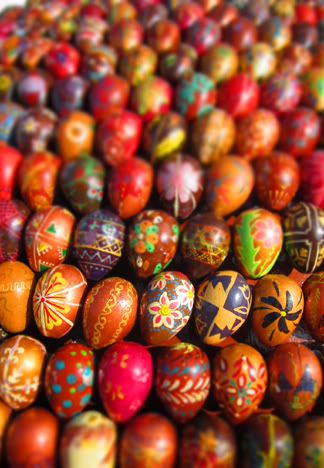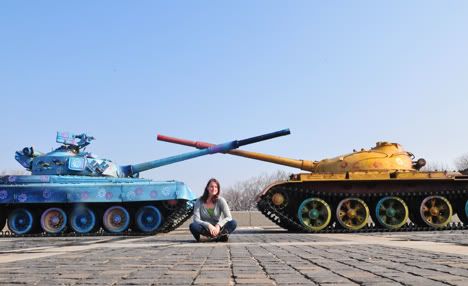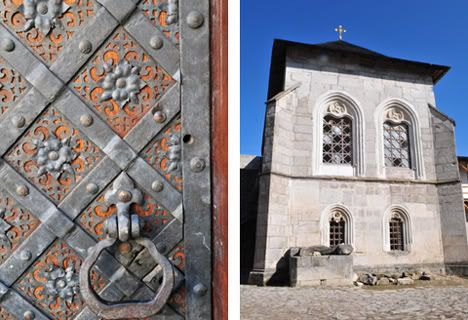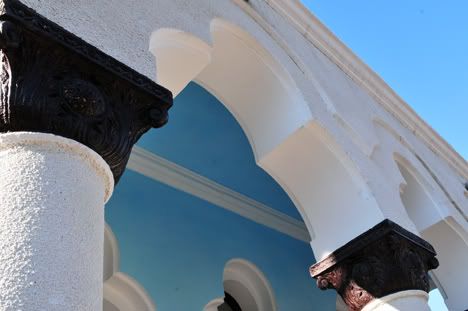Since it's founding as an important Orthodox cave monastery in 1015, the Kiev Pechersk Lavra (literally, Monastery of the Caves) is one of the most important and visually impressive sights in Ukraine, making both the coveted UNESCO World Heritage list, and the slightly comic Seven Wonders of Ukraine:




The complex consists of an upper and lower system which contain numerous architectural monuments, churches, and an underground cave system housing the visible mummified remains of over 100 saints visited by pilgrims and tourists alike. Walking by candlelight through teeny, underground caverns and stale air to see the withered hands of holy men of yore is a pretty cool experience indeed.
The churches' golden domes stretching into the brilliantly blue sky is always such a pretty sight.
In preparation for Easter, quite a few pysanka (decorated eggs) were on display as well:
Around every corner are long-bearded and long-robed monks, young women and old ladies making the sign of the cross, and glistening, gilded flickers of gold:
Some of the 11th century frescos from inside the Trinity Gate Church:
It's easy to get church-overdose here in Orthodox Ukraine, but the UNESCO sights never disappoint, and I definitely recommend this golden complex if you find yourself in Kiev.
From the Pechersk Lavra (and from most points in Kiev as well), you can spot a grand Liberty-esque monument imposing in the distance:
It's the huge Rodina Mat (Mother of the Motherland) statue, also lovingly referred to as "Tin Tits," which marks the entrance to the (very Soviet) National Museum of the History of the Great Patriotic War (known as WWII to you and me):
All around this great gallivanted dame are monuments to Ukrainian (Russian) workers and heros of the war, as well as glorified relics of its bloody past. Throw in about two dozen speakers throughout the grounds blaring patriotic songs from the 30s and 40s, and you have the perfect soundtrack for retro propaganda at its finest!
The "heroic national defense of Ukraine," in my opinion, could be portrayed in no other way! It's actually quite interesting, as an American, to learn about the actions and consequences of WWII through a former-Soviet point of view, and to realize the impact it had (and still has) on the people of Ukraine. Us Westerners tend not to learn so much about how Ukraine suffered at the hands of Nazis trying to march their way to Moscow!
In any case, with a booming lady swinging 12 tons of sword and shield over you, it's hard to not muster up at least a little appreciation for the efforts of this museum.
From golden domes to Soviet glory, Kiev's west bank of the Dnipro River is a good place to delve a little into the heart of Ukraine's capital.



























































